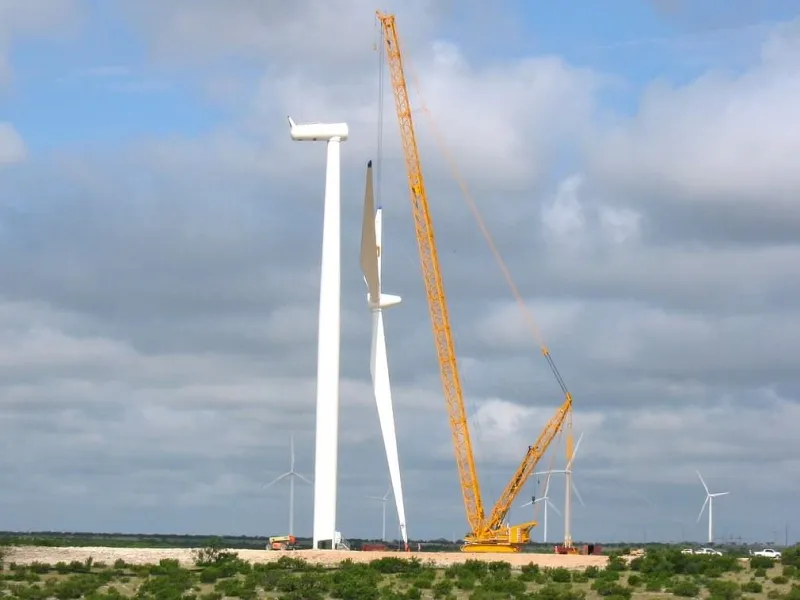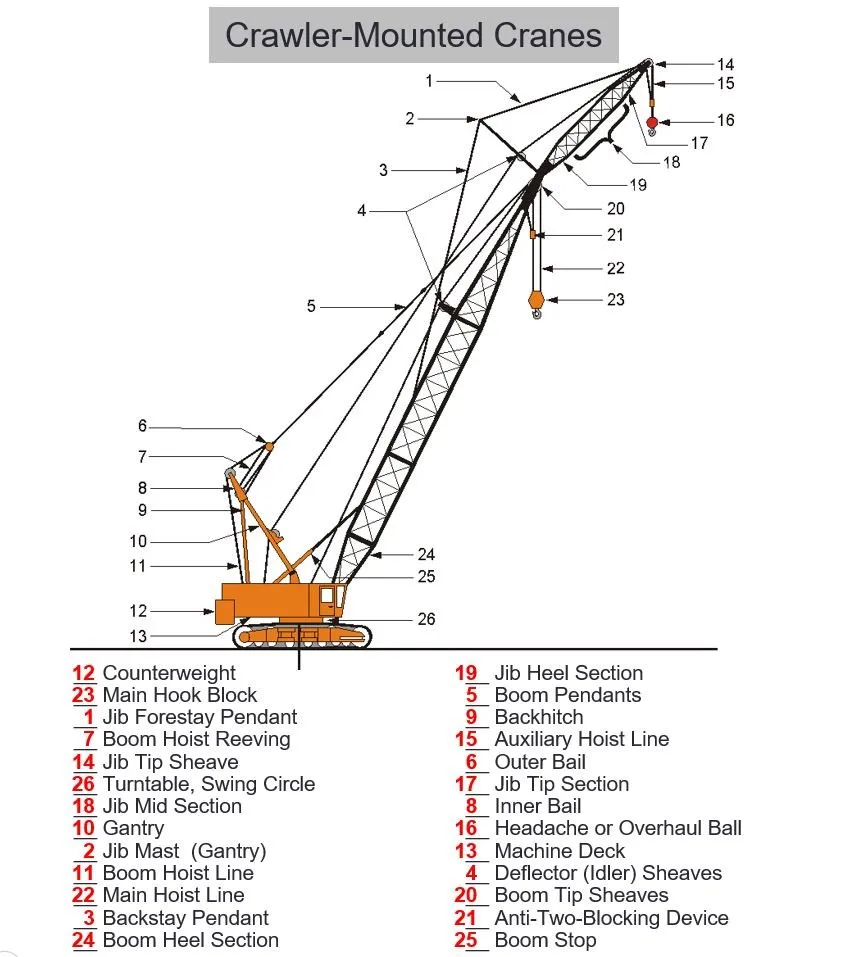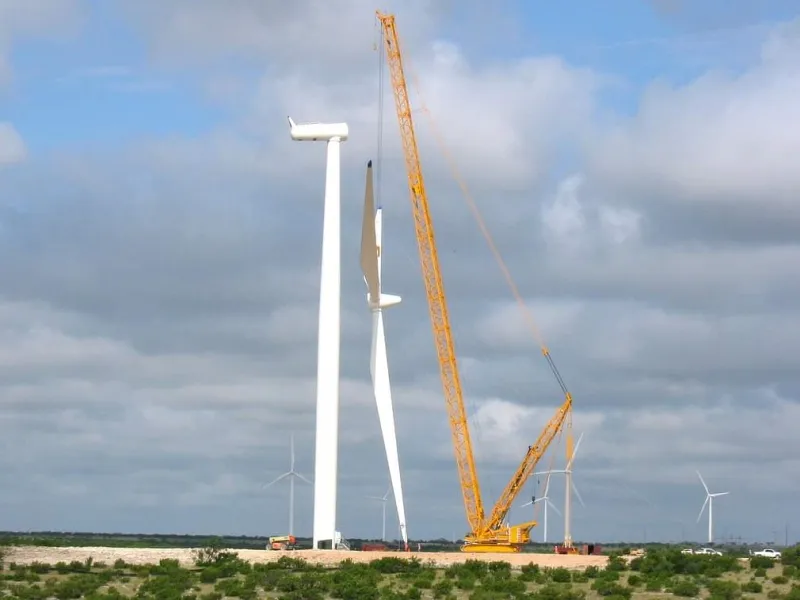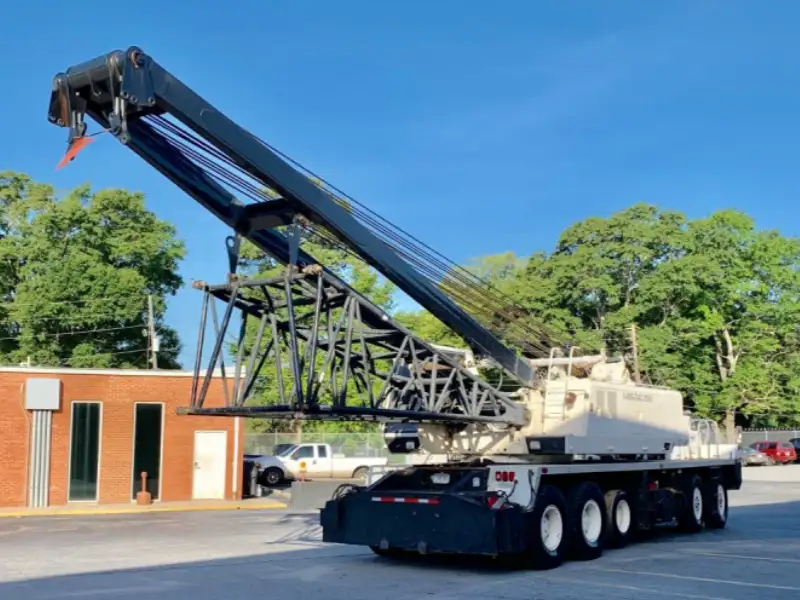
What Is a Lattice Boom Crane?
Lattice boom cranes are renowned for their strength, flexibility, and lifting capacity, thanks to their truss-like lattice boom structure. Understanding their key components helps in operation, maintenance, and selecting the right crane for heavy lifting tasks.
Lattice Boom Crane
Lattice Boom Crane Components
1. Lattice Boom (Main Boom)
What it is: The primary extending arm is made of a welded steel truss (lattice structure) for lightweight yet high-strength lifting.
Function: Provides reach and load-bearing capacity; can be telescopic or fixed.
Why lattice? Reduces wind resistance and weight compared to solid booms.
2. Jib (Fly Boom / Extension Boom)
What it is: An optional secondary boom attached to the main lattice boom for extended reach.
Function: Increases working radius for lifting loads at greater distances.
Types: Fixed jib or adjustable luffing jib.
3. Boom Erection System (Boom Lift Cylinders / Hoist Winches)
What it is: Hydraulic cylinders or winches that raise/lower the lattice boom.
Function: Allows boom angle adjustment for different lifting scenarios.
4. Counterweights
What it is: Heavy steel or concrete blocks at the crane’s rear.
Function: Balances the load to prevent tipping during lifts.
Adjustable? Some cranes have movable counterweights for flexibility.
5. Outriggers (for Mobile Lattice Boom Cranes)
What it is: Extendable stabilizing legs (hydraulic or mechanical).
Function: Distributes crane weight evenly for stability on uneven surfaces.
6. Hoist & Trolley System
What it is:Wire ropes, hoist drums, and trolleys that move the load along the boom.
Function:Lifts and positions the load precisely.
7. Cab (Operator’s Control Station)
What it is: The operator’s compartment with controls for boom movement, hoisting, and slewing.
Modern features include LCD monitors, anti-collision systems, and remote control options.
8. Slewing Ring (Rotating Base)
What it is: A rotating bearing that allows the crane’s superstructure to turn 360°.
Function: Enables full rotational movement for precise load placement.
9. Crawlers / Undercarriage (for Crawler Cranes)
What it is: Track-based mobility system (for crawler lattice boom cranes).
Function: Provides stability and mobility on rough terrain.
10. Load Moment Indicator (LMI) & Safety Systems
What it is: Electronic sensors that monitor load weight, boom angle, and stability.
Function: Prevents overloading and tipping by alerting the operator.
Lattice Boom Crane Diagram

Working Principle
A lattice boom crane works through a coordinated system of key components, operating in the following steps:
Boom Structure– The lattice boom (a lightweight, high-strength steel truss) serves as the main lifting arm, available in fixed, telescopic, or jib-equipped configurations for different reach needs.
Lifting Mechanism– The hoist system (wire ropes, winches, and a trolley) raises, lowers, and horizontally moves the load along the boom with precision.
Stability Control – Counterweights at the rear balance the load, while outriggers (mobile cranes) or crawler tracks (crawler cranes) distribute weight to prevent tipping.
360° Rotation– The slewing ring allows the crane’s upper structure to rotate freely, enabling flexible load placement in all directions.
Safety Monitoring– The Load Moment Indicator (LMI) continuously tracks load weight, boom angle, and stability to prevent overloading and ensure safe operation.
Lattice Boom Crane Types
1. Crawler-Mounted Lattice Boom Cranes
Features
Strong Stability: The crawler chassis provides excellent stability, enabling operation on a variety of terrains, including soft and uneven surfaces, without the need for additional roadbed boxes. This is because the crawler tracks have a large contact area with the ground, evenly distributing the crane’s weight.
Relatively Good Mobility: They can be moved around the construction site, making them suitable for transfers between different work locations. They are particularly well-suited for large-scale construction sites, bridge construction, and other projects requiring crane mobility.
High Lifting Capacity: Due to their stable foundation and robust structural design, they typically have a high lifting capacity, enabling them to lift heavy equipment, large steel structures, and other substantial objects.
Applications
They are commonly used in large-scale infrastructure construction projects, such as bridges, large building foundations, and dams, capable of lifting loads weighing several or even tens of tons to great heights and distances.

2. Truck-Mounted Lattice Boom Cranes
Features
High Mobility: Mounted on a truck chassis, they offer excellent roadworthiness and can be quickly moved from one construction site to another without the need for additional transport equipment, enabling rapid response to changing construction site requirements.
Relatively Easy Installation and Disassembly: Compared to crawler cranes, these cranes are typically quicker to install and disassemble, enabling them to be deployed and removed from the job site in a shorter period of time, improving construction efficiency.
High Flexibility: They offer greater flexibility in movement and positioning within the construction site, making them suitable for operations in relatively limited spaces where mobility is required.
Applications
Suitable for urban construction projects, industrial plant equipment installation, small bridge construction, and other projects requiring frequent movement between locations and lifting moderate loads.

3. Tower-Mounted Lattice Boom Cranes
Features
Large Lifting Height: The tower structure enables high lifting heights, making it suitable for the construction of high-rise and super-high-rise buildings, as well as large tower-type facilities. It can lift construction materials and equipment to heights of tens or even hundreds of meters.
Large Working Radius: By properly adjusting the tower and boom lengths, a large working radius can be achieved, allowing for coverage of a larger construction area.
Good Stability: The tower provides a stable support, ensuring stability and safety during high-altitude operations.
Application
Primarily used in the construction of high-rise buildings, large television towers, chimneys, and other tall structures, it is an indispensable piece of equipment for urban high-rise building construction.
4. Fixed Lattice Boom Cranes
Features
Highly Customizable: They can be designed and installed to meet specific work requirements, such as fixed installation within a specific factory building or on the foundation of large equipment, to meet specialized lifting requirements.
Long-term stability: Once installed, it provides stable lifting performance, suitable for long-term, repetitive lifting operations.
Precisely designed lifting capacity and working range: Parameters such as lifting capacity, working radius, and lifting height can be precisely designed based on the installation location and usage requirements to achieve optimal performance.
Application
Commonly used in large factories, ports, docks, shipyards, and other fixed locations for long-term, regular lifting and handling of heavy equipment.
